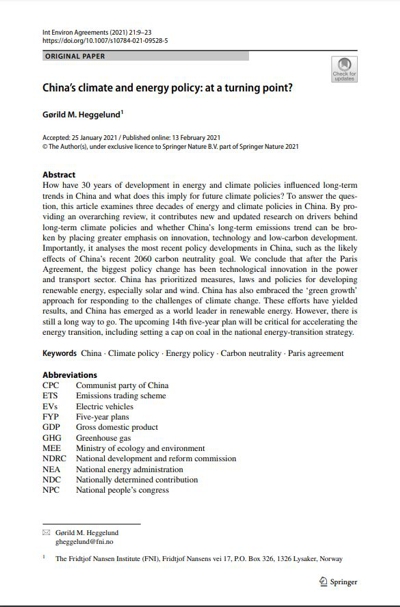Publication: China’s climate and energy policy: at a turning point?
To download the publication please click on the download link at the bottom of the page
Authors: Gørild M. Heggelund
CNARC member: Fridtjof Nansen Institute (FNI)
Abstract: How have 30 years of development in energy and climate policies influenced long-term trends in China and what does this imply for future climate policies? To answer the question, this article examines three decades of energy and climate policies in China. By providing an overarching review, it contributes new and updated research on drivers behind long-term climate policies and whether China’s long-term emissions trend can be broken by placing greater emphasis on innovation, technology and low-carbon development. Importantly, it analyses the most recent policy developments in China, such as the likely effects of China’s recent 2060 carbon neutrality goal. We conclude that after the Paris Agreement, the biggest policy change has been technological innovation in the power and transport sector. China has prioritized measures, laws and policies for developing renewable energy, especially solar and wind. China has also embraced the ‘green growth’ approach for responding to the challenges of climate change. These efforts have yielded results, and China has emerged as a world leader in renewable energy. However, there is still a long way to go. The upcoming 14th five-year plan will be critical for accelerating the energy transition, including setting a cap on coal in the national energy-transition strategy.


